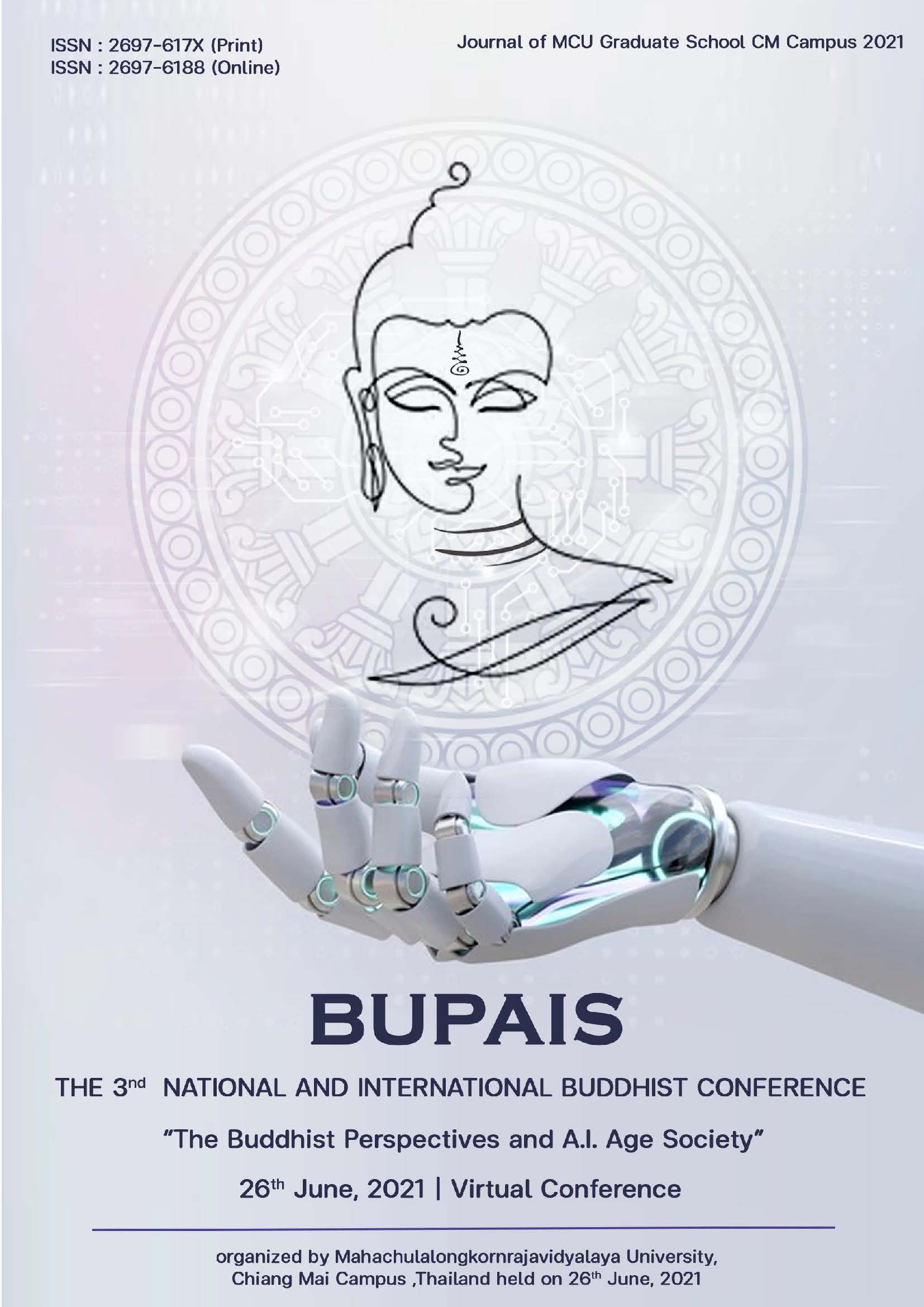กระบวนการอยู่ปริวาสกรรมตามประเพณีของพระภิกษุ ภาคตะวันออกเฉียงเหนือ: กรณีศึกษาวัดป่าวิสุทธิมัคคาราม ตำบลบ้านผือ อำเภอบ้านผือ จังหวัดอุดรธานี
บทคัดย่อ
การศึกษาวิจัยนี้มีวัตถุประสงค์ คือ 1) เพื่อศึกษากระบวนการเข้าอยู่ปริวาสกรรมในพระพุทธศาสนา 2) เพื่อศึกษากระบวนการอยู่ปริวาสกรรมตามประเพณีของพระภิกษุภาคตะวันออกเฉียงเหนือ : กรณีศึกษาวัดป่าวิสุทธิมัคารามตำบลบ้านผือ อำเภอบ้านผือ จังหวัดอุดรธานี 3) เพื่อวิเคราะห์กระบวนการอยู่ปริวาสกรรมตามประเพณีของพระภิกษุภาคตะวันออกเฉียงเหนือ : กรณีศึกษาวัดป่าวิสุทธิมัคคารามตำบลบ้านผือ อำเภอบ้านผือ จังหวัดอุดรธานี เป็นงานวิจัยเชิงคุณภาพใช้การรวบรวมข้อมูลจากเอกสาร งานวิจัยที่เกี่ยวข้องและเก็บข้อมูลจากการสัมภาษณ์กลุ่มตัวอย่างผู้มีส่วนเกี่ยวข้องกับงานวิจัยจำนวน 18 รูป/คน ผลการวิจัยพบว่า
- การอยู่ปริวาสกรรมในพระพุทธศาสนา คือ การประพฤติวุฏฐานวิธี หมายถึง ระเบียบปฏิบัติสำหรับพระภิกษุที่ต้องอาบัติสังฆาทิเสสข้อใดข้อหนึ่ง หรือทั้ง 13 ข้อ แล้วปกปิดไว้ ทั้งที่เกิดโดยความตั้งใจหรือไม่ตั้งใจ และอาจรู้ตัวหรือไม่รู้ตัวก็ตาม จึงต้องประพฤติวุฏฐานวิธี เพื่อเป็นการลงโทษตัวเองให้ครบเท่ากับจำนวนที่ปกปิดอาบัติไว้ โดยพระภิกษุที่ต้องอาบัติสังฆาทิเสสแล้วเข้าไปหาตั้งแต่ 4 รูปขึ้นไป เพื่อแจ้งให้ทราบว่า ตนติดอาบัติสังฆาทิเสส ซึ่งกระบวนการอยู่ปริวาสกรรมตามพุทธศาสนา มี 4 ประเภท คือ 1) อัปปฏิจฉันนปริวาส 2) ปฏิจฉันนปริวาส 3) สโมธานปริวาส 4) สุทธันตปริวาส
- กระบวนการอยู่ปริวาสกรรมตามประเพณีของพระภิกษุภาคตะวันออกเฉียงเหนือ เป็นกิจกรรมทำความดีตามความเชื่อศรัทธาในพุทธศาสนาของชาวไทยอีสาน เป็นงานบุญประเพณีหนึ่งในประเพณีฮีตสิบสอง หรือนิยมเรียกว่าบุญเข้ากรรม นิยมจัดงานในเดือนอ้าย เดือนเจียงของทุกปี เพื่อให้พระภิกษุที่ต้องอาบัติสังฆาทิเสสได้ปฏิบัติวุฏฐานวิธี ซึ่งเป็นระเบียบอันเป็นเครื่องออกจากอาบัติ พระภิกษุต้องอาบัติสังฆาทิเสสต้องประพฤติมานัต 6 คืน ให้ภิกษุผู้ต้องอาบัติหมวดสังฆาทิเสสที่จะเข้าอยู่ปริวาสกรรมได้ชำระความมัวหมองของศีลให้แก่ตนเอง โดยต้องไปขอปริวาสจากสงฆ์ สงฆ์อนุญาตแล้ว เมื่อได้ประพฤติมานัตครบ 6 คืนแล้วจะขออัพภานจากสงฆ์อีก เมื่อสงฆ์ให้อัพภานแล้วภิกษุรูปนั้นจึงจะได้ชื่อว่า “เป็นผู้มีศีลบริสุทธิ์”
- ผลการวิเคราะห์กระบวนการอยู่ปริวาสกรรมตามประเพณีของพระภิกษุภาคตะวันออกเฉียงเหนือ : กรณีศึกษาวัดป่าวิสุทธิมรรคาราม ตำบลบ้านผือ อำเภอบ้านผือ จังหวัดอุดรธานี จากการศึกษากระบวนการพบว่า (1) ด้านรูปแบบการจัดปริวาสกรรม เป็นแบบประเพณี ฮีต สิบสอง ของชาวอีสาน มีคฤหัสถ์มารักษาศีล ปฏิบัติธรรม และฟังพระธรรมด้วยความเลื่อมใสศรัทธาในพระพุทธศาสนา โดยคฤหัสถ์เหล่านี้มุ่งหวังอบรมตน (2) ด้านสถานที่วัดป่าวิสุทธิมัคคาราม เป็นพื้นที่ป่าโปรง มีอาคารสถานที่เหมาะสมกับการจัดปริวาสกรรม เงียบสงบไม่ค่อยมีคนพลุกพล่าน ตามหลักสัปปายะ 4 (3) ด้านบุคคลพระกรรมวาจารารย์ ต้องเป็นผู้ไม่ทุศีล ไม่ต้องอาบัติหนัก อาบัติรอง ต้องสวดให้ชัดถ้อยชัดคำ ไม่ขาดตกบกพร่อง (4) ด้านพระสงฆ์ผู้เข้าปริวาสกรรม ต้องเป็นผู้ต้องอาบัติสังฆาทิเสสข้อใดข้อหนึ่งหรือทั้ง 13 ข้อ ต้องอยู่ปริวาสกรรม ดังนี้ อาบัติ คือ โทษที่เกิดเพราะความละเมิดพุทธบัญญัติ และเมื่อภิกษุมีความสอดคล้องกันตามพระวินัยที่พระภิกษุที่ต้องอาบัติสังฆาทิเสสจะต้องอยู่กรรมตามจำนวนวันที่ปกปิดไว้จึงจะออกจากอาบัติได้ (5) ด้านขั้นตอนการอยู่ปริวาสกรรม มี 3 ขั้นตอน ได้แก่ ขั้นที่ 1 ให้ภิกษุที่รู้ตัวว่าตนเองต้องอาบัติขอเข้าอยู่ปริวาสกรรมจากฆ์แล้วประพฤติวัตรต่าง ๆ เป็นการทำโทษตนเองเท่ากับจำนวนวันที่ปกปิดความผิดนั้น ๆ ไว้ ขั้นที่ 2 ขอมานัติจากสงฆ์ แล้วประพฤติมานัต 6 คืน ขั้นที่ 3 เมื่อประพฤติมานัติครบ 6 คืน แล้วขออัพภานจากสงฆ์ เมื่อสงฆ์ให้อัพภานแล้วถือว่าได้กลับเป็นภิกษุผู้มีศีลบริสุทธิ์ ดังนั้น กระบวนการอยู่ปริวาสกรรมตามประเพณีของพระภิกษุภาคตะวันออกเฉียงเหนือ: กรณีศึกษาวัดป่าวิสุทธิมัคคาราม ตำบลบ้านผือ อำเภอบ้านผือ จังหวัดอุดรธานี มีความสอดคล้องกับหลักพระวินัยในพุทธศาสนา
บรรณานุกรม
พระครูนิมิตธรรมโชติ (เหิน พันสนิท). (2558). “ศึกษาการจัดปริวาสกรรมของวัดผานกเค้า ตำบลผานกเค้า อำเภอภูกระดึง จังหวัดเลย. วิทยานิพนธ์พุทธศาสตรมหาบัณฑิต. สาขาวิชาพระพุทธศาสนา
บัณฑิตวิทยาลัย: มหาวิทยาลัยมหาจุฬาลงกรณราชวิทยาลัย.
พระมหาไพทูล อตฺถวํโส (วงศ์อามาตย์). (2545). “การศึกษาเชิงวิเคราะห์การประพฤติวุฏฐานวิธีในคัมภีร์พระพุทธศาสนาเถรวาท. วิทยานิพนธ์พุทธศาสนามหาบัณฑิต. สาขาวิชาพระพุทธศาสนา บัณฑิต
วิทยาลัย: มหาวิทยาลัยมหาจุฬาลงกรณราชวิทยาลัย.
พระมหาวิจิตร ธีรญาโณ. (2556). การศึกษาการเข้าอยู่ปริวาสกรรมของพระสงฆ์ไทยในปัจจุบัน. บทความวิชาการพุทธศาสตรมหาบัณฑิต. คณะพุทธศาสตร์: มหาวิทยาลัยมหาจุฬาลงกรณราชวิทยาลัย.

